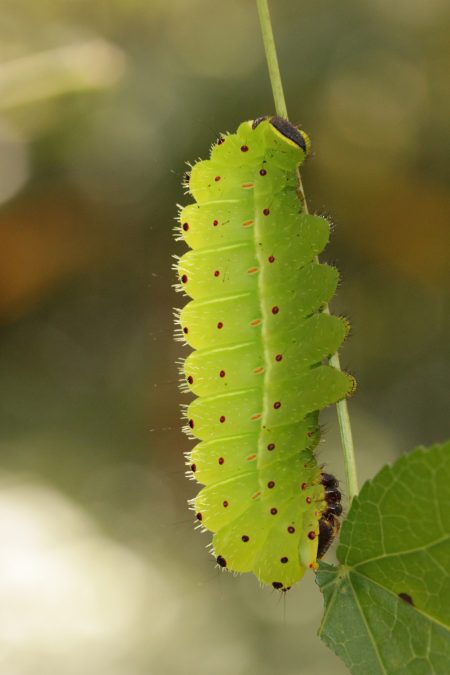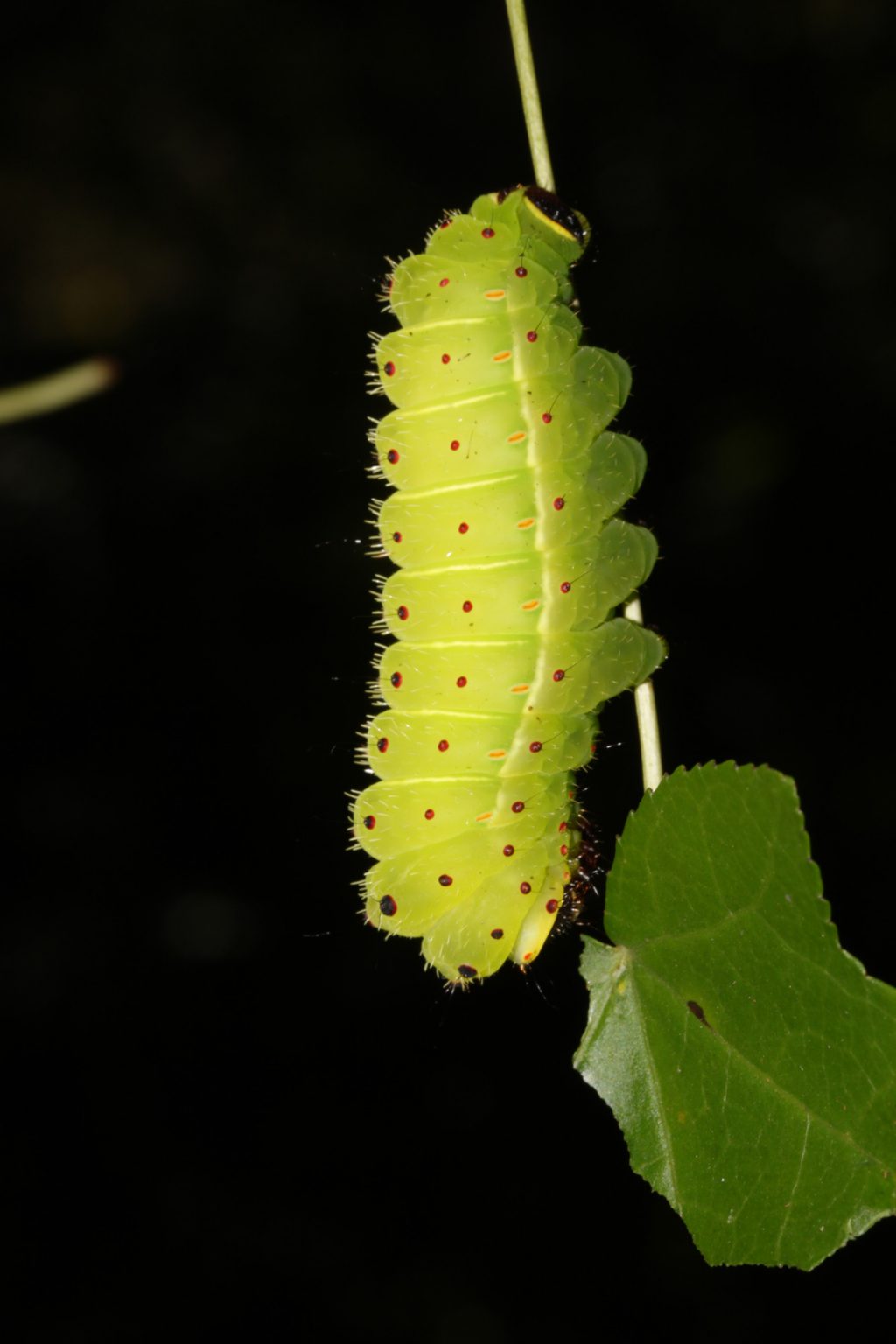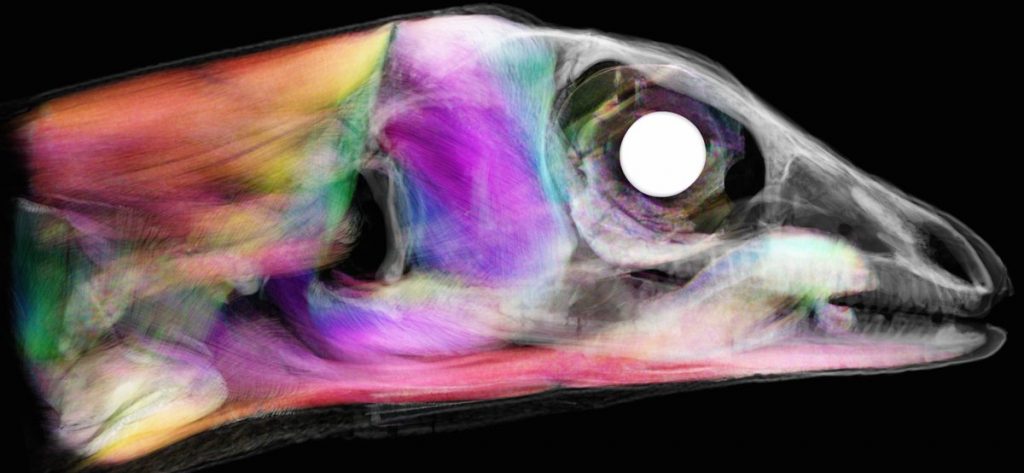Florida Museum researcher Andrei Sourakov recently published a paper in the Journal of Natural History on his observations of the interactions between invasive brown anoles and luna moth caterpillars.

Florida Museum photo by Andrei Sourakov
Author: Andrei Sourakov
Excerpt from discussion:
“Field-testing predator-prey interactions between invasive exotic brown anole lizards and sentinel larvae of the luna moth, Actias luna, suggests that late instars of this saturniid, and perhaps many other saturniids, are well defended by their spines and crochets against predation by lizards. However, Actias luna larvae remain vulnerable to anole predation until they reach about 3 cm in length.”
In this study, Sourakov contrasted his observations on the luna moths caterpillars with his observations on chemically defended io moth and monarch caterpillars.
“In contrast, even relatively small caterpillars that are chemically defended, such as those of the io moth, Automeris io, and the monarch butterfly, Danaus plexippus, were shown to be well defended against anoles by their toxins. There is an obvious advantage for caterpillars to be chemically defended. However, there is also a tradeoff: Danaus plexippus are restricted to feeding on a relatively small group of plants, which limits resources and requires specialisation; in polyphagous Automeris io, the constant production of elaborate spines and toxin leads to prolonged larval development, which is at least twice as long as that of Actias luna, and exposes the caterpillars to mortality factors such as parasitism for a longer duration.”
Read the paper: Size, spines and crochets: defenses of luna moth caterpillars against predation by brown anoles
Source: Andrei Sourakov, asourakov@flmnh.ufl.edu, 352-273-2013
Learn more about the McGuire Center for Lepidoptera & Biodiversity at the Florida Museum.

